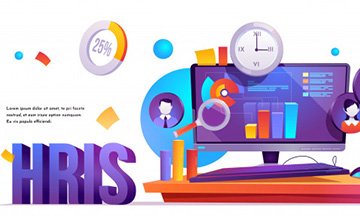Human Resource (HR), the buzz in today’s corporate world, is gaining focus, momentum, and importance in relation to an organization’s success as a business competitor and employer. While organizations, in the past, have focused on bigger challenges like revenue, competition, and economic instability, the aspect of HR made its importance felt eventually; there was an evident lack of attention to it earlier.
With changing business models and the industry, HR has now become the prime focus for most organizations, small or large, because people are the most important asset of an organization and have the power to influence its growth and success substantially.
Human Resource Management (HRM) involves creating the right roles and opportunities, planning for workforce recruitment, ensuring continual training and development, fostering strong performance management, offering attractive compensation structures and benefits, keeping updated with legislation and legal compliances, and providing protection against economic instability.
While there are numerous challenges that can influence HRM, these can broadly be classified into environmental (legal compliances, labor markets, economy, political unrest, etc.), organizational (restructuring, upsizing or downsizing, competition, change management, culture, etc.), and individual (work ethics, empowerment, growth and succession, etc.). This article outlines 10 top HR challenges commonly faced by organizations and their possible solutions.
Click to visit the HR courses category for details on all courses
1. Competition (attracting and retaining good talent)
Competition is not only the most important factor in business and client interactions but also the most influential and threatening factor in HR. It is all the more difficult for small and medium enterprises since they need to compete with big names and brands while recruiting talent.
The challenge does not stop at recruitment, but goes beyond to retention of employees and offering the correct benefits, exposure, opportunities, and work environment. Solution: Strong employer branding plays a crucial role in attracting the good talent to your organization.
With the emerging impact of social media and platforms like Glassdoor and Google, it helps to build a strong and positive brand presence on these platforms, because your prospective employees are privy to anything and everything published here.
Being active in Corporate Social Responsibility (CSR) activities is not an obligation but a privilege to many employers to give back to society. This passively helps set an emotional platform for prospective employee–employer bonding.
Furthermore, having a structured onboarding process helps combat initial hiccups in an employee’s experience in a new work environment, such as awkwardness to interact with strangers, not knowing whom to approach for issues, concerns, or questions, not knowing one’s key performance indicators for the job role, not knowing team members or the immediate manager well enough, etc.
2. Job and Culture Fitment
Recruitment is the first step that can make or break the success of a prospective employee’s journey in your organization. With expedited recruitment processes because of the growing need for human capital, assessments for job and culture fit are being restricted to a few rounds or hours of discussion, meetings, and interviews.
While this could be an advantage to speed up your recruitment process, the risk of incorrect or inaccurate mapping of a candidate’s skills to the job role and organization culture persists. This is leading to higher attrition rates and lower average employee tenure of organizations.
Solution: The first and foremost step to combat this challenge is accurate and effective screening of candidates. It is important for an organization to have clarity on what exactly they need in a candidate for a particular profile; identify forums/sites/avenues frequented by people matching most, if not all, these requirements; and post their job openings there.
This would take care of most applications being the right fit for the job. Role-plays during face-to-face discussions will ensure culture match assessments. Having probation periods or contractual arrangements for roles ensures that the candidate and organization have enough “secured” time to assess fitment and agreement.
3. Compensation and Benefits
With the cut-throat competition in today’s corporate world, it is becoming difficult for organizations (specially small and medium enterprises) to keep up with the compensation and benefits offered by big names.
Recruitment and retention then become extremely difficult. The increasing costs of benefits, training, taxes, and other human capital investments pose an additional threat to organizations’ progress and success.
The recent benefits being offered, in addition to attractive compensation packages, make it challenging to keep pace in order to still be a strong contender among sought-after employers.
Solution: Besides compensation structures meeting industry standards, it is important for organizations to offer other attractive benefits. However, these cannot be at the cost of the organization’s investment in human capital growing two-fold.
One way to ensure return on investment is to offer variable, performance-based components to an employee’s compensation, thus keeping a check on performance-linked reward. A strong reward and recognition program also serves as a good motivation and attraction to perform.
With increasing healthcare costs, organizations can either choose to pass the costs to employees (may be a hindrance in recruitment and retention) or bear the costs themselves.
In case of smaller organizations, offering other flexible and attractive benefits to combat health-related concerns, such as extended vacation time, flexible timings, health camps and well-being programs, transport benefits, etc., could be a good idea.
4. Change Management
Change in an organization is inevitable in the fast-paced, ever-changing corporate world today. This change could be structural, economical, geographical, procedural, managerial, or technological, the latter having the greatest influence and posing the biggest challenges to HR.
HR faces major issues of reduced employee morale and satisfaction, self-doubt, attrition, etc., during change. Employees not being able to adapt to change can lead to the failure or death of an organization.
The inability to adapt to change could be because of various factors, such as employee resistance to change, lack of necessary skill and training to adapt to change, sudden but drastic requirements to change, etc.
It is thus imperative for an organization to foresee, plan/predict, and communicate change. Solution: The most important practice to manage change positively is to predict it and prepare your employees for it. Not everyone is open to sudden change.
Each employee would take different time to adapt to change of any kind. It is thus important to communicate, clearly and transparently, about the change, the need for the change, the benefit of the change, etc.
Further, communication should be regular before, during, and after the change to keep a check on the progress with respect to the change. It is also important to provide the necessary training and resources to upskill employees to handle changes in their work, job role, or organization at large.
Providing the necessary training makes them feel more confident and capable of managing the change, resulting in them accepting change more positively and openly. Another crucial aspect to keep in mind is that the focus on employee growth and progression is evident to them even during the change.
5. Continuous Learning and Succession Planning
Upskilling and continuous learning are extremely crucial to an employee’s growth and success in an organization. These days, with the increasing demands of the business, organizations are finding it difficult to foster an environment of continuous learning and development and keep pace with the rising ambitions of employees, for the paucity of time.
With the need for rapid growth and progression, planning the succession and growth path for all employees alike is becoming difficult. With lesser positions at the top, being able to create an interest and attraction in those positions and providing ample opportunities is a big concern for HR.
Solution: The basic principle to effective training and development is to identify trainings relevant to the current or future role of an employee. Further, adopting a practical rather than theoretical approach to training helps. For example, presentations and PPTs are now old school.
Current affairs, case studies around these, role-plays, debates, etc. are the new and effective ways of training. With the advancement of technology, online training spread over longer durations and offered to employees from home helps address challenges of time. Cross-training and cross-skilling can work for creating opportunities of lateral progression for effective succession planning.
6. Performance Management and Alignment
While an organization may be able to provide the necessary training and development to its employees, it is equally important for it to be able to track the impact of this training on the performance of the employees.
Performance management and the related next steps, such as performance improvement plans, are becoming difficult with the fast pace of business operations and the lack of time for performance alignment.
Larger organizations also face challenges of helping employees understand how their job roles and performance indicators align to and contribute to the achievement of the overall organizational objectives.
Solution: Having a strong and defined, yet simple, performance framework is very important. Key performance indicators should not be difficult to understand or manage and should be directly related to the job role of the employee.
The employee should be able to directly relate his/her performance to the targets set for him and should be able see how each achievement is contributing to the big picture.
Using Objective and Key Result software will help align individual goals to team goals and team goals to organizational goals, showing related progress in each. Regular feedback discussions also help the employee understand the direction of his/her performance and make amends accordingly.
7. Diversity
While having a good ratio of diversity is a boon to an organization and is a good thing to boast of, from an HR perspective, organizations face challenges managing this diversity in age, gender, nationality, ethnicity, etc.
It is a big challenge to cater to and address the requirements and experience of employees of different ages, genders, nationalities, or ethnicities. Further, maintaining employee engagement and fostering effective communication among employees from different backgrounds is difficult and leads to employee disagreements and souring relations.
Solution: To resolve conflicts arising out of this diversity, it is important to sensitize all employees toward the cultures of different people they work with. Culture orientation as part of the onboarding process is a prime step in the correct direction.
The organization’s values and work culture should give prime importance to team work and promote a work environment of respect and understanding for peers. Team-building activities aligning employees to a common objective help integrate employees of different cultures and backgrounds.
Setting a set of organization values or standards of behavior within a workplace also helps each employee understand his/her role, conduct, and behavior in an organization. While adherence to policies and procedures is important, an organization needs to create a culture that is welcoming and comfortable.
8. Leadership Development
In its efforts to provide the appropriate resources and training platforms to its employees, an organization often overlooks the need for training and grooming of leaders in particular.
It is a common misconception that leaders have reached a stage where they do not need to learn more and, if they do, that can be achieved through self-learning. Leaders are very crucial factors influencing organizational success and employee satisfaction.
The lack of leadership grooming results in employer-employee conflicts and disagreements and an unhealthy work environment, thus affecting employee morale and satisfaction, and eventually, the organization’s goals.
Solution: It is extremely important that an organization devices a learning and development strategy encompassing all levels within the organizational chart. Training, mentoring, and succession planning for leaders should be given as much importance as it holds for other employees.
While technical aspects can be self-learned, soft skills, such as having difficult conversations, providing developmental feedback, conducting meetings, etc., need to be taught through experience, exposure, and feedback.
To avoid the risk of losing leaders to ambition and other organizations offering bigger roles with a larger scope, organizations should show leaders the path ahead and what the organization foresees for them in the near future, financially and professionally.
9. Legislation (Labor Laws and Compliances)
With all labor laws becoming increasingly employee-friendly, it is a big challenge for organizations, especially small and medium enterprises, to keep pace with these requirements.
Further, because smaller organizations may not necessarily have a focused department for HR, updating policies in accordance with changing laws is a big task, and an organization could find itself in trouble if a lawsuit is filed for non-compliance.
These laws and legislations relate to not just employment contracts but also hiring practices, employee benefits, payments, and the like. Further, because most of these acts and legislations are grey, correct interpretation is important for ensuring adherence, yet not overcommitting to employees.
Solution: Hiring statutory compliance agencies is a big advantage to an organization because the organization not only saves time but also receives expert opinion and has all its policies and guidelines in accordance with industry standards.
While these could come at a cost, it is still worth it compared to the cost for non-compliance, which could include cost in case of a lawsuit and the cost of losing one’s brand image as an employer. Regular audits of policies and guidelines and their amendment is a must. Further, the HR department of the organization should be agile enough to adapt all its practices to the changing laws of the market.
Last, but not the least, it is extremely important for not just HR but also each employee within the organization to understand the laws governing employment and its related benefits and aspects, and this can be made possible through regular awareness drives around these topics.
10. Data Security and Integrity
With the world becoming digital and employees using mobiles and other such devices at work, organizations face a high risk of data leaks and misuse. Prohibiting use of mobile phones and other such devices at the workplace would not be a smart step, as it would work against the organization being employee-friendly.
With this, organizations struggle to keep their data secure and balance data security and integrity with employee flexibility and freedom. Employee data leak and misuse is as critical as client data leak and misuse.
Data leaks impact company reputation and the future success of an organization. The buck for data security and integrity stops at HR and is not the sole responsibility of IT. Solution: It is the responsibility of HR to manage and maintain data security while not disturbing employee freedom and privacy.
An organization should have regular audits for information security practices to keep a check on all departments and their security measures to protect data within.
Employee awareness of data integrity standards and best practices, such as password rules, desktop rules, phishing emails, etc., should be the prime focus. Furthermore, HR should formulate strong data protection policies and procedures to educate employees regularly.
The off-boarding process of the organization needs to be robust and detailed, covering all declarations and checkpoints related to intellectual property and confidentiality.
Organizations would benefit from employee integration, cooperation, and communication. No organization has ever prospered with employees working in silos. Thus, HR plays a crucial role in managing the biggest asset of an organization—its people.
Human Resource Management is extremely crucial to create a unique workplace culture and eliminate employee uncertainties, giving the organization a competitive advantage.
Thus, it is extremely crucial for organizations to focus on the above challenges, relate them to specific causes or effects within their own work culture, and devise ways and plans to address these urgently.
Employees are the face of an organization, its strongest ambassadors, and it is HR’s responsibility to ensure employee experience and satisfaction as well as professional alignment and progress. It is thus time organizations realize that their strength lies in the human resources and proactively take steps in the correct direction.


















